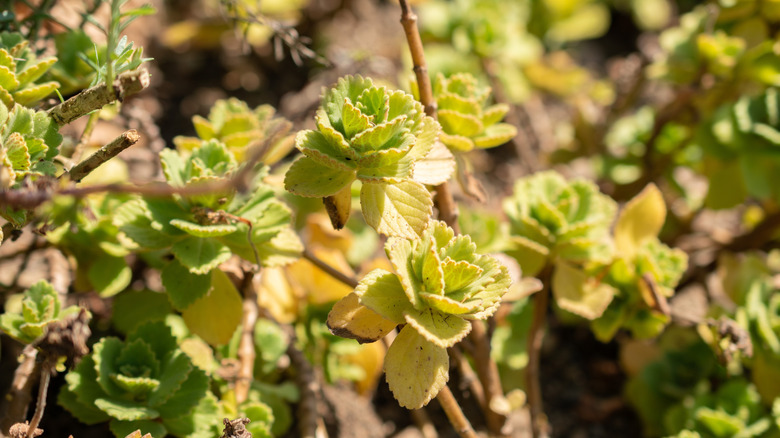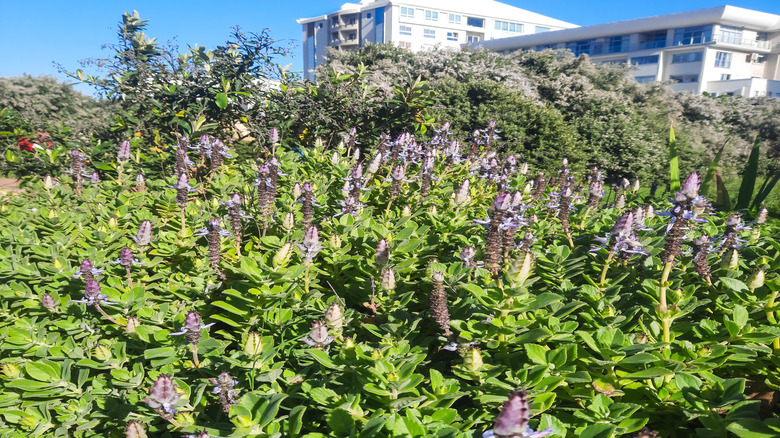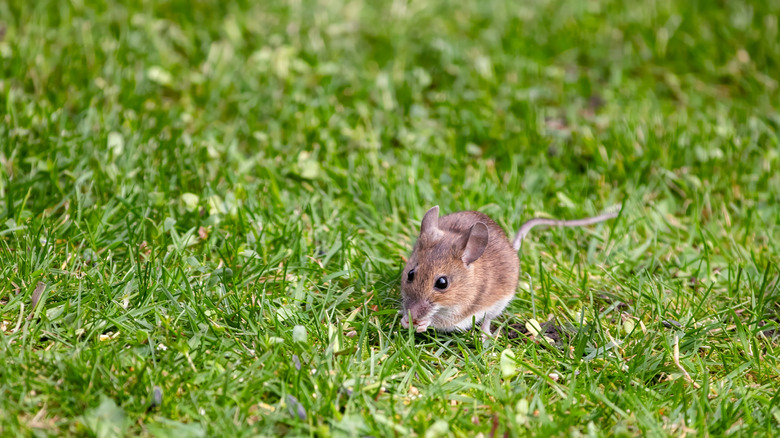The Fast Growing Ground Cover That Can Give Your Yard A Gorgeous Scent
The American concept of the white picket fence with an extensive grassy lawn dates back to the era of the Founding Fathers, who took inspiration from European estates when establishing homesteads like Mt. Vernon and Monticello. However, these carefully manicured status symbols are an environmental nightmare, using up a third of all residential water in the U.S. With that in mind, many are turning toward native ground covers as an undemanding, water-friendly alternative to seed the space around their homes.
Ground covers can serve many purposes, from crowding out weeds to protecting the soil from erosion and extreme temperatures. If you want a unique ground cover that's quick to sprout, consider trying your hand at growing some panadol (Plectranthus or Coleus caninus). Not to be confused with the brand name for common painkiller acetaminophen, panadol is an evergreen perennial belonging to the Lamiaceae family, commonly known for mints.
The plant originates from eastern regions of Africa, as well as India and Myanmar, and provides visible foliage throughout the year (except during winter) as well as purple flowers during summer. Some common ground covers aren't worth putting in your yard, but panadol comes with a unique smell similar to marijuana that also makes it an effective pest deterrent. With the right growing conditions, this ground cover could be a key new part of your homestead.
How to successfully grow panadol in your yard
There are plenty of tips and tricks out there for how to grow thriving ground cover plants, but for low-maintenance plants like panadol, it's important to stick with the basics. Coleus caninus grows best in full sun to partial shade, especially within USDA growing zones 9 through 11. This means most of the southern border states and the western coastline are ideal candidates for panadol. It should grow to its full height within a year or two in moist, but well-drained soil, and it will grow fairly independent of any particular pH composition. That being said, panadol does thrive in a nitrogen-rich environment, which can be enhanced with the use of fertilizers and small doses of natural compost like coffee grounds.
Ground covers broadly speaking also need space to spread out. You can keep your growths close together if you want to quickly fill a small area, but having too much in such a small proximity could be hard to maintain as the plants become entangled. Plectranthus caninus is fairly easy to propagate via cuttings, so it's worth finding a bush that has already been grown nearby. In fact, you might find it easier to get your hands on some panadol plants if it turns out your neighbors have been dealing with the same kind of pest problems that you have.
A panadol ground cover can also help deal with pests
The scent that panadol gives off for humans is actually considered an effective natural deterrent. Also known as the "scaredy cat plant," Plectranthus caninus gives off an especially potent scent when it has been recently touched. As its colloquial name suggests, panadol is thought to be good for shooing away cats and other small mammals, including rats and mice. In this way, growing panadol is similar to plants like garlic that can repel flies from your home, helping keep your living space tidy and possibly even protecting external structures like tool sheds out in the yard.
In fact, if you're planning on growing panadol near your garden, its status as a ground cover means you have space for other companion plants that can keep your veggies happy and healthy. Strong smells and having little bare ground will repel plant-eating insects, meanwhile, you can plant annual flowers that attract pollinators such as sunflowers, salvia, or zinnia. Having a unique ground cover like panadol will bring a lot of value that's missing with just a basic grassy lawn, so it's a low-maintenance option you'll want to consider for your next big round of landscaping.


